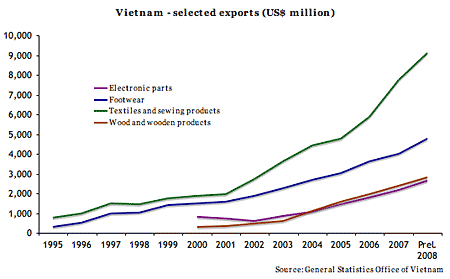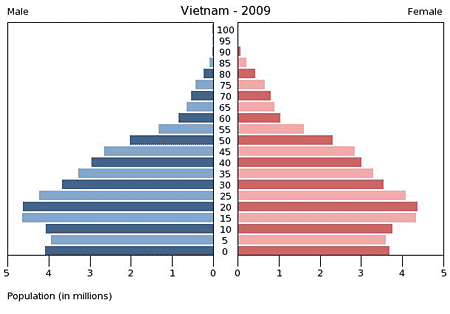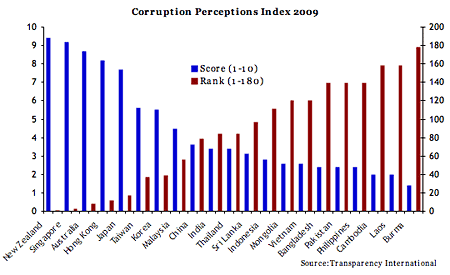Don't miss out on Vietnam
Like China, Vietnam is a one-party state moving towards a market-led economy. But it is years behind China in development. And so it offers the chance to invest in a China-type story at a much earlier stage. Cris Sholto Heaton looks into this exciting frontier market, and explains the best ways to invest before it's too late.

This week's MoneyWeek Asia is driven by two bits of news. The first is that Vietnam has been forced to devalue its currency, the dong, after insisting for some time that it wouldn't do so. The other news is that I've just bought a new pair of shoes.
How do these fit together? Well, this email is all about Vietnam. And those shoes are the first decent pair I've ever owned that were made there.
Devaluation may point to a bumpy period ahead for the Vietnamese economy but quality shoes tell me its long-run prospects are still good. Indeed it remains one of my favourite Asian investments. Here's why.
MoneyWeek
Subscribe to MoneyWeek today and get your first six magazine issues absolutely FREE

Sign up to Money Morning
Don't miss the latest investment and personal finances news, market analysis, plus money-saving tips with our free twice-daily newsletter
Don't miss the latest investment and personal finances news, market analysis, plus money-saving tips with our free twice-daily newsletter
Vietnam is playing rapid catch-up
The case for Vietnam is very simple. Like China, it is a poor communist state moving towards a market-led economy. But it remains many years behind China in development, with a GDP per capita less than half as large. Consequently, offers the chance to invest in a China-type development story at a much earlier stage.
Vietnam's main exports are raw materials such as oil, coal, rice and coffee. However, it's slowly evolving into a low-cost manufacturing centre: shipments of goods such as shoes, clothing, furniture and even basic electronic components have risen rapidly, as the chart below shows.
Figure 1. Selected exports from Vietnam, US$m

Most of the goods Vietnam is making are the kind that can no longer be made so cheaply in the Chinese coastal provinces because of rising costs. So manufacturing will relocate to other, cheaper centres, which include inland China, Indonesia and parts of India, as well as Vietnam. Over time, Vietnam should move steadily up the value chain, drawing more skilled manufacturing work away from higher-cost regions, and gradually becoming wealthier along the way.
This is a well-trodden path among Asian countries - and for good reason. It takes advantage of a poor country's big problem (low incomes) and turns it into an asset (low wages). Crucially, it also provides a clear path for moving the unskilled rural poor from farming to higher value-added work.
Vietnam has other strengths apart from a pool of cheap labour. These include good demographics for long-term growth (see chart below), with a steady flow of young people coming into the workforce, and a small population of older people who need to be supported.
Figure 2. Demographic pyramid for Vietnam

Education levels are also relatively high given its level of development (basic adult literacy is 90%), which will be an advantage in moving to more skilled work. With a population of 86 million, it's also large enough to have a significant domestic economy rather than being solely export-driven. Finally, its natural resources will continue to be valuable exports in a world that demands steadily more of them.
What could go wrong?
As ever, there are risks. The country has high corruption, being one of the worst in Asia on this score, according to Transparency International's Corruption Perceptions Index (see chart below). And its infrastructure needs a lot of investment. Neither of these needs to scare off investors; they're inevitable in a country at its level of development, and should improve as the economy evolves.
Figure 3. Perceived corruption (10 = best) and rank (1 = best) for Asian economies

The long-term major risk is political: that the government doesn't take the necessary steps to keep the economy on the right development track. This seems fairly unlikely; the experience of the rest of Asia has given them a fairly good blueprint to follow. That said, Vietnam's reform programme known as Doi Moi (renewal) has not yet gone as far as China's. More needs to be done.
Large state-owned conglomerates need to be restructured, the financial system strengthened and trade restrictions liberalised. Privatisations have also been slower than hoped, perhaps because the state has been too greedy. In China on the other hand, the importance of giving a good deal to buyers is recognised.
The economy is still fragile
There are also some near-term problems. Unlike most of Asia and despite its strong export growth, Vietnam runs a persistent trade deficit. That's partly due to a lack of refining capacity which means it must import refined fuels despite being an oil exporter (its first refinery came on stream earlier this year and two others are under development, which should resolve this over the years to come).
The deficit also reflects strong domestic demand, driven by the rapid growth in domestic credit in recent years (see chart below) and a high level of foreign direct investment. Together, these factors mean that Vietnam has more in common with the China of the eighties or Southeast Asia in the nineties than the rest of Asia today.
Figure 4: Vietnam's outstanding bank credit and year-on-year growth (via Citigroup)

Despite the global downturn and the drying up of foreign investment, the government was able to keep loan growth strong to help cushion the economy through the downturn, as you can see above. This is the same path China has followed; however, Vietnam is running up against its limits quicker than its larger neighbour.
A lack of spare capacity in the economy means inflation is already picking up, while concerns about asset price bubbles are also growing. Meanwhile, strong import demand coupled with still-subdued exports has caused the trade deficit to widen. Add in the fact that foreign direct investment has yet to pick up strongly again, and Vietnam is now suffering a balance of payments problem: foreign exchange reserves have shrunk to around three months of import cover.
These problems have been putting downward pressure on the dong, which is pegged to the US dollar at a fixed rate. Last week, the central bank succumbed to the inevitable and devalued the currency by 5%. It also raised interest rates by one percentage point and told banks to control lending more carefully. More steps in all three directions are likely in the months to come.
Ultimately, this is for the good; tightening monetary policy will stop the economy overheating, while devaluation will serve to make Vietnam even more attractive as an exporter. However, in the short term this reduces the value of foreign investors' assets, in contrast to the rest of Asia, where currency appreciation is working in our favour.
More importantly, this is happening at a time when Dubai's debt troubles may make investors nervous about other risky assets. If that happens, Vietnam could be a flashpoint. Earlier this month, markets had improved sufficiently for the government to talk about issuing the country's second international bond (the first was in 2005). But in this deteriorating climate, it's possible that it may have to turn to the IMF or the Asian Development Bank for a loan.
This wouldn't point to major problems; Vietnam is in much better shape than the rest of the countries that turned to the IMF for help in the last year. But sentiment is clearly not good. Until recently, it looked like markets would look through any near-term problems, but not any more. The VN Index is down more than 20% in the last four weeks and if jitters over the Dubai situation get continue, it will slide further.
Figure 5. Ho Chi Minh stock index

But despite these short-term risks, I like Vietnam. On a price-earnings ratio of 16 times this year's earnings and 13 times consensus forecasts for next year, the market is cheap if you have a long-term focus and you're willing to sit through a lot of volatility in the years to come.
I suspect most investors are planning to wait out the next few weeks and see if the latest wobbles turn into anything more. However, if you don't already have a position in Vietnam, it's a good candidate to add when you decide to go back into the market. (But please bear in mind that as a frontier market, it is by definition high risk and should only ever be a small part of a portfolio.)
The best ways to invest in Vietnam
So how can you invest? Well, Vietnamese stocks are available to foreigners, subject to limits on foreign ownership; however, as far as I know, a trading account can only be opened in person in Vietnam. I haven't tried this and I'd be interested to hear from any readers who have.
There are few stocks listed outside Vietnam with meaningful exposure to the economy. However, a number of major firms expressed interest in cross-listing in Singapore before the crisis and there are signs this could move forward soon: real estate developer Vincom has just issued the country's first offshore convertible bond there.
However, there are a surprisingly large number of Vietnam funds. Investors now have a choice of two ETFs, one listed in Europe and Asia from Deutsche Bank's x-trackers range and one from Van Eck listed in the US. In my view, the DB one is the clear winner; it is significantly cheaper and tracks an index that consists only of Vietnam-listed stocks. Van Ecks's offering includes a number of overseas firms that operate in Vietnam, but are not significantly geared to the country given the overall size of their businesses.
Apart from this, there are a good handful of investment trusts/closed-end funds, mostly listed in London. Generally these have an Indochina mandate, meaning that they can invest a percentage of the fund in Cambodia and Laos. My top pick among them would be VinaCapital's Vietnam Opportunity Fund. This is a general purpose fund that invests in listed equity, debt, real estate and private equity; the current portfolio includes around 45% listed shares and 25% real estate.
The annual management fee is 2%, with a performance fee of 20% of gains over a hurdle rate of 8%. This is typical of its sector; nonetheless, I dislike this kind of fee structure and it's my biggest reservation about the fund. However, given the experienced management team behind it, the range of assets it can invest in and the fact that it's currently trading at a discount of 30% to its net asset value, the fund is still attractive. VinaCapital also runs VinaLand, a real estate fund, and the Vietnam Infrastructure Fund, which are also listed on Aim.
The other listed funds that I know of are in the table below (I've left out Indochina Capital Vietnam Holdings, which recently voted to wind up). As usual, just because a fund is included doesn't mean that I think it's a good investment: in particular, note that JSM Indochina is involved in an ugly fight between directors and a major shareholder.
Figure 5. Listed Vietnam investment funds
table.ben-table table { border: 3px solid #2b1083;font: 0.928em/1.23em verdana, arial, sans-serif;}
th { background: #2b1083; padding: 10px 5px;color: white;font-weight: bold;text-align: center;border-left: 1px solid #a6a6c9;}th.first { border-left: 0; padding: 5px 2px;text-align: left;}
tr {background: #fff;}
tr.alt {background: #f6f5f9; }
td { padding: 5px 2px;text-align: center;border-left: 1px solid #a6a6c9;color: #000;vertical-align: center;}td.alt { background-color: #f6f5f9; }
td.bold { font-weight: bold; }td.first { border-left: 0; text-align: left;}td.right{ border-left: 0; text-align: right;}
| DB x-trackers FTSE Vietnam | 0.85% | DE, FR, GB, GB$, HK, IT, SG |
| Van Eck Market Vectors Vietnam | 1.42% | US |
| DWS Vietnam Fund | Equity and debt | DE:V2V |
| JSM Indochina | Real estate | LN:JSM |
| Vietnam Equity Holding | General | DE:3MS |
| Vietnam Holding | Privatisations | LN:VNH |
| Vietnam Infrastructure Fund | Infrastructure | LN:VNI |
| Vietnam Opportunity Fund | General | LN:VOF |
| Vietnam Property Fund | Real estate | LN:VPF |
| Vietnam Property Holding | Real estate | DE:3MT |
| VinaLand | Real estate | LN:VNL |
There are no widely-available unit trusts and none at all that I know of in the UK. There are a number of offshore unlisted funds; these will usually have high minimum investments, but for anyone wanting to investigate further, a fuller list is available here.
This article is from MoneyWeek Asia, a FREE weekly email of investment ideas and news every Monday from MoneyWeek magazine, covering the world's fastest-developing and most exciting region. Sign up to MoneyWeek Asia here
Get the latest financial news, insights and expert analysis from our award-winning MoneyWeek team, to help you understand what really matters when it comes to your finances.
Cris Sholto Heaton is an investment analyst and writer who has been contributing to MoneyWeek since 2006 and was managing editor of the magazine between 2016 and 2018. He is especially interested in international investing, believing many investors still focus too much on their home markets and that it pays to take advantage of all the opportunities the world offers. He often writes about Asian equities, international income and global asset allocation.
Cris began his career in financial services consultancy at PwC and Lane Clark & Peacock, before an abrupt change of direction into oil, gas and energy at Petroleum Economist and Platts and subsequently into investment research and writing. In addition to his articles for MoneyWeek, he also works with a number of asset managers, consultancies and financial information providers.
He holds the Chartered Financial Analyst designation and the Investment Management Certificate, as well as degrees in finance and mathematics. He has also studied acting, film-making and photography, and strongly suspects that an awareness of what makes a compelling story is just as important for understanding markets as any amount of qualifications.
-
 Why you fear money – and how to fix it: MoneyWeek Talks
Why you fear money – and how to fix it: MoneyWeek TalksPodcast MoneyWeek's digital editor, Kalpana Fitzpatrick, speaks to financial psychotherapist Vicky Reynal about how to change your money mindset for the better.
-
 How cancelling unused direct debits could boost your pension by £37,000
How cancelling unused direct debits could boost your pension by £37,000A new year refresh of your spending could save you money and help boost your pension pot.
